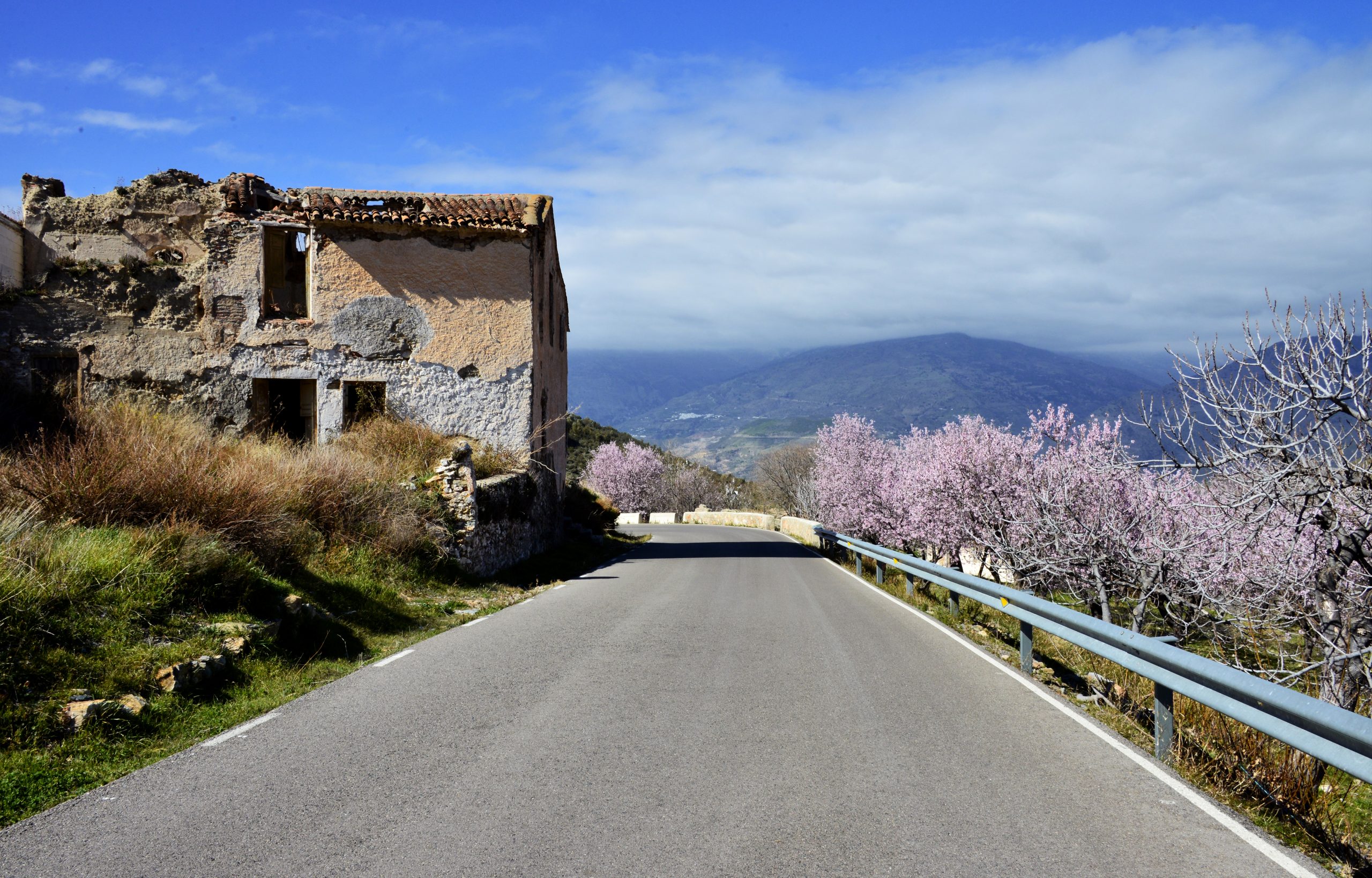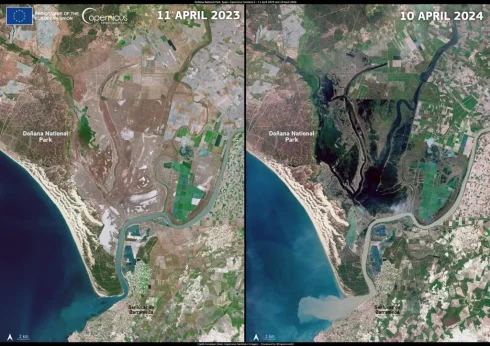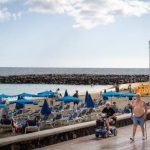FAMED for its panoramic views, vineyards producing local ‘vino’, and pink almond blossoms in early spring, the Sierra de la Contraviesa is an unspoilt place to visit. It is known as the low Alpujarra (Alpujarra Baja) of Granada region, although a small part lies in Adra, Almeria.
Previously known as the Sierra del Cehel, the Contraviesa lies parallel to Granada’s Sierra Nevada range, nestling between the Guadalfeo River and the Costa del Sol. To the west, it borders the Sierra de Lújar – a higher and sparser mountain that hosts the area’s radio masts. To the east lies the Sierra de Gádor. The Grande de Adra river runs between both ranges, emerging at the sea beside some unspoilt coastal villages.
The Contraviesa’s fertile land is ripe for growing almonds, grapes, and figs, receiving many hours of sunshine. The area produces the infamous ‘vino de la Contraviesa’ – a rosé -coloured wine, also called “costavin”, that’s enjoyed in the local towns and villages. It’s a firm favourite with many expats and is quite potent, so be warned not to glug it down.
Rolling hills with panoramic views
The Contraviesa range is orgogenic, meaning it was originally formed by the earth’s crust folding where the Eurasian and African plates grind together
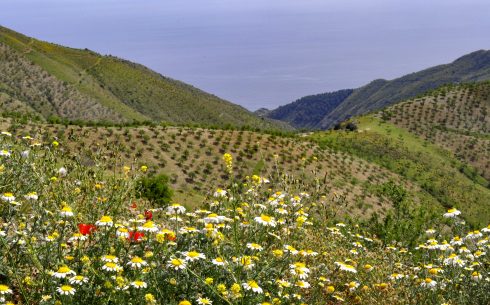
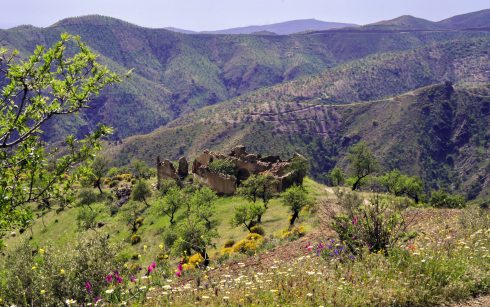
Compared to the nearby Sierra Nevada, the Contraviesa is a rolling countryside that is pretty, rather than dramatic. The area has many ravines and ramblas and is popular with hikers, mountain bikers and horse riders. The high points of the Contraviesa are Mount Salchicha at 1,545m, near Polopos, and Cerrajón de Murtas at 1,514m.
The village of Haza del Lino lies on the 1,280m midpoint. Here, various mountain roads and municipalities meet, and it’s surrounded by the Iberian Peninsula’s highest and oldest cork oak forest.
A treat for motorists who aren’t nervous, the winding mountain passes over the Contraviesa afford amazing views in every direction. Google Maps doesn’t recognise these roads, instead sending drivers around the A-44 motorway. You’re missing a beautiful trip by not forcing your satnav to send you over the top.
On route, you can see the peaks of the Sierra Nevada in the north, including Mulhacén and Veleta. Round the next curve, you’ll look towards the coast and see the Mediterranean Sea sparkling, azure blue, on the horizon.
Almond spotting
Every year, the slopes of the Contraviesa burst alive with pretty, pink almond blossoms. These start in mid-January, in almond farms on the terraced land, and tend to continue until early February, depending on whether strong winds destroy the blooms.
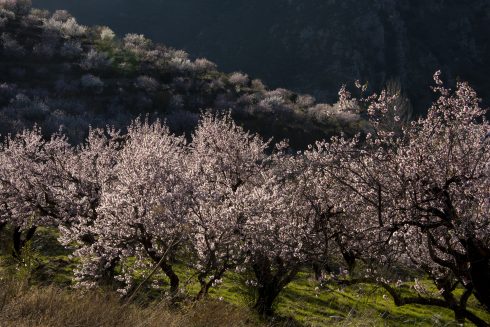
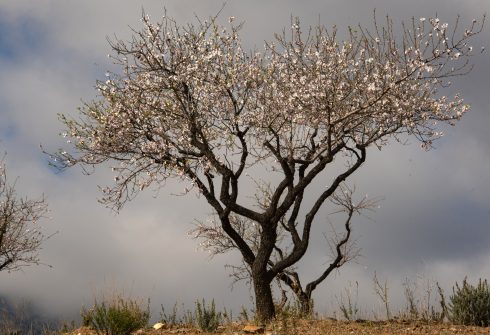
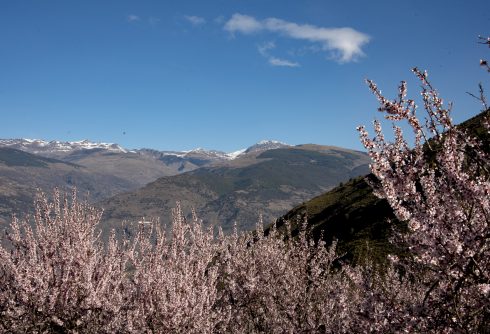
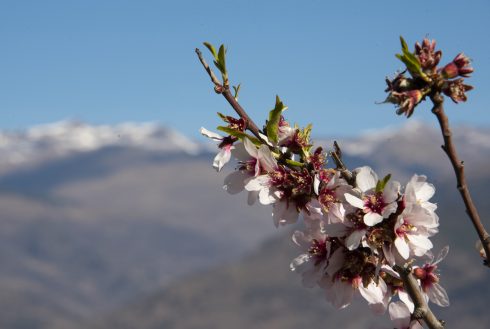
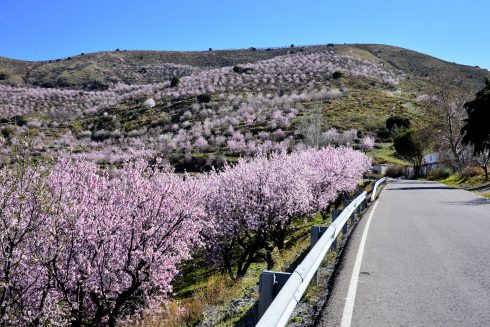
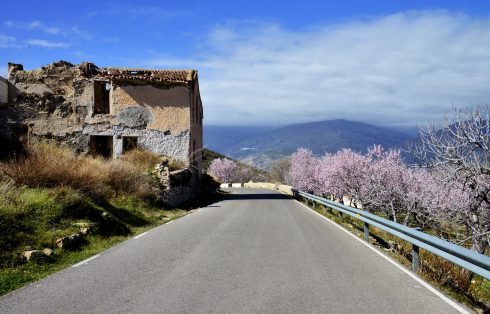
A popular pastime for local photographers is to visit the Contraviesa during the golden hour – just before sunrise or sundown – for beautiful shots of almond trees silhouetted against the low sun. It is an unmissable experience for anyone keen on taking landscape shots. Some photographers even hail from the UK for Contraviesa photography tours.
Some of the best places to see almond blossoms are on the road from Tablones, the GR-5206 crossing through Haza del Lino or, if you don’t mind unnamed roads, the mountain pass above Torvizcón.
A plethora of popular towns
Spanning two provinces, the Sierra de la Contraviesa is shared between several local municipalities. These are Torvizcón, Almegíjar, Cástaras, Lobras, Cádiar, Ugíjar on the north face and Murtas, Turón, Albondón, Adra, Albuñol, Sorvilán, Polopos, Rubite and Alcázar (part of Órgiva), on the south face, looking towards the sea.
It has various other small villages and points of interest, including Olías, near Lújar. It’s worth whiling away a few hours exploring in your car, or on foot.
Torvizcón is a popular town on the A-348 that runs between La Alpujarra and Almeria, just 15mins drive from the market town of Órgiva. It celebrates the fiesta of San Anton on 13 January, where bonfires are lit throughout town. There’s also a raffle to win some locally bred pigs. Visitors are advised to visit on the actual night of the bonfires, when there’s the most to see and do.
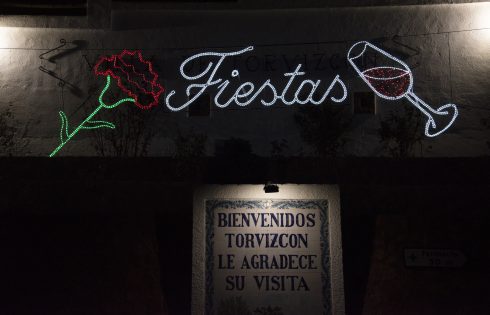
Another 15mins along the A-348, Cádiar is a charming market town with easy access to the high Alpujarra, Albuñol, and the thriving town of Ugíjar, which is a gateway to the Almerian Alpujarra. Cádiar has many restaurants to enjoy. The nearby small village of Lobras has a well-known venue called Meson La Fabriquilla that hosts music events.
The village of Rubite nestles on the south face of the Contraviesa and has impressive views towards the Mediterranean Sea. It lies on the winding A-5206 that leads to the charming coastal town of Castell del Ferro.
Polopos is another Contraviesa gem. It has an art trail that takes place every December, where local artists hold exhibitions all over town. Called Pop Up Polopos, this attracts visitors from throughout the Alpujarra and has previously been filmed by a Dutch TV channel.
Enjoy the seaside
Heading to the coastal side of the Contraviesa, there’s a choice of seaside resort to visit. These include Castillo del Banos, La Rabita and La Mamola, which is part of Polopos.
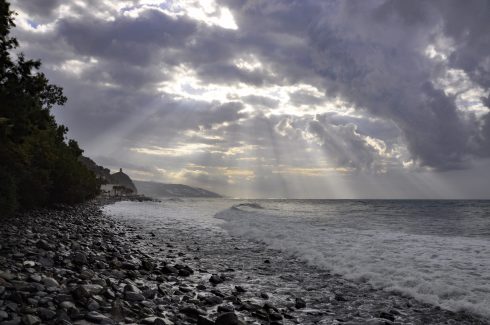
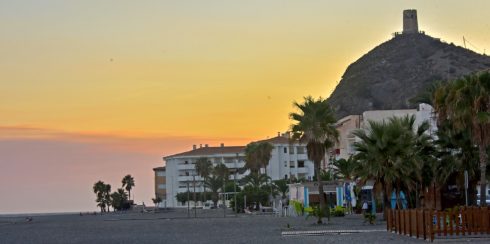
These seaside towns aren’t over-developed and remain tranquil, even in high season. This means you won’t be squabbling over where to pitch your beach towel – unlike in the busier resorts towards Almeria or Malaga.
La Mamola is a small agricultural town that has an ancient watch tower called Torre de Cautor. It used to be a fishing village, until the fleets moved in the 1980s. Hotels are available at bargain rates in La Mamola, near the first line of the beach. The bars and ‘chirungitos’ also offer reasonable prices.
You can walk between La Mamola and nearby Los Yesos, taking in the fresh air and sea views.
Just along the coast towards Adra, La Rábita is another popular destination for beach trips and offers affordable hotel accommodation.
Something for everyone
Easily accessible from Granada, Motril and Almeria, the Sierra de Contraviesa caters for every type of visitor, whether you want to drive, hike, or take in the scene from a bar/restaurant. You can check out everything from tiny villages to bigger towns, based on the mountain, the coast, or rolling hillsides. And don’t forget to try the ‘vino’.
Box out: Things to do
- Drive into the Contraviesa from the A-5209 from Motril and the A-5207 passing through Lújar – this is one of the most beautiful networks of mountain roads in the area.
- Drive over the A-4131 for 360-degree panoramic views.
- Design your ow photography tour at dusk or dawn.
- The PR-A-32 hiking trail winds through the Sierra de la Contraviesa. There’s also the PR-A340 from Adra to Turon, reconstructing an old fisherman’s trail.
- Visit an ancient cork oak forest.
READ MORE
- Travel Spain: these are the villages you should visit in the Alpujarra, south of Granada
- A Christmas tale of La Alpujarra in Spain’s Andalucia

